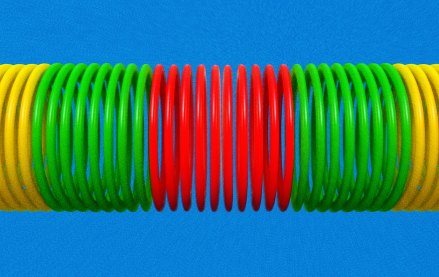
Mark Piesanen, Chief Revenue Officer, CreativeX
Brands spend months — years, even — investing in brilliant creative ads that will go on to catch consumer attention and win awards at industry events like Cannes Lions.
That said, only some ads will win an award. Vital as it is to take this moment to celebrate the best and brightest ads in the industry, at the end of the day, it’s a single moment in the calendar year that feeds into a broader marketing plan. Brands can’t afford to ignore the other 99% of ads they create in favor of the heavy hitters.
However, research by CreativeX suggests that brands are ignoring a huge chunk of what they’re producing, or at the very least, they’re not being efficient in their content production lifecycle. More than half (52%) of core creative assets produced by global Fortune 500 brands across 2023 were never used or activated. That’s about $25 million in spend wasted annually — the equivalent cost of more than three Super Bowl ad slots.
Brands need to give the content produced year-round the space to be activated and wear in — i.e., it can take time for content and creative to become familiar to audiences and prove effectiveness. An approach that allows for wear in stands to maximize the fruits of brands’ labor and sets advertisers up to get more mileage out of budgets. Regarding both outcomes, the process starts by better understanding the content production lifecycle.
Global and local teams are pulling in different directions
Large brands often need more visibility into their entire content lifecycle. They can’t see how core assets that they produce are deployed and modified across each team and market.
While global teams are responsible for consistent brand messaging across all markets, local teams often adjust this according to regional cultural sensitivities, language and audiences, which can be difficult for brands to manage. Teams in local markets could be spending precious and limited resources creating the same or similar ads when they could simply repurpose content already created, developed and tested — but global teams have no way of knowing that’s the case.
With the right tools powered by artificial intelligence, brand teams across all levels can gain visibility across their entire content production ecosystems. They can isolate the most often reproduced assets and make more efficient assets that can be appropriately tweaked, opening up bottlenecks and maximizing budgets that would otherwise be wasted.
The idea of wear out is holding back content
The age-old myth that ads can wear out and quickly become ineffective after just a few uses isn’t true. However, the idea of wear out causes marketers to pull their ads from circulation too soon before they’ve even had a chance to wear in and generate positive responses. With every consumer bombarded with thousands of pieces of content daily, recognizing and remembering an ad takes several repetitions. It isn’t until later in the advertising cycle that ad fatigue, a specific form of wear, sets in and effectiveness slowly starts to decline due to overexposure.
Marketers are more inclined to believe an asset has worn out because they’re much closer to the content they produce than audiences ever will be. Reviewing and refining campaigns over months or even years means that when it comes to launch, the content no longer feels new to the people behind it.
Brands that fail to allow their ads to wear in are unnecessarily investing budget in creating new ads when they could rely on proven winners that will connect with consumers and save brands the headache of churning out new content. Great ads maintain their success and can run for years — and should be allowed to do so.
First-party data is an untapped treasure trove
First-party data has historically been associated with website analytics, purchase history and customer demographics. However, advances in AI mean that brands now have access to a new kind of first-party data: creative data.
This data is taken directly from the assets themselves and can be used to map the content production system end-to-end. The good news is brands don’t need to overhaul their current marketing setup to do so. It’s about tapping into an existing data set that all brands are currently sitting on.
The lack of an efficient content production lifecycle is an industry-wide issue that will spiral out of control if brands don’t prioritize team alignment, allow ads to wear in and learn to use creative data. New tools are helping brands unveil efficiency opportunities and reduce waste by using creative data to determine whether core assets are activated and, if so, the extent to which they are localized and reused. This allows brands to track how their content is used end-to-end, providing much-needed transparency to help brands identify and reduce inefficiency in their content lifecycle.
Optimizing the content production lifecycle isn’t about radical overhaul or breaking the marketing wheel. The goal is to use existing data to work smarter and more efficiently, not harder.
Sponsored by CreativeX
More from Digiday

‘A year of loose ends’: Digiday editors share top takeaways from 2025
This year was filled with major developments – from Netflix’s planned WBD deal to Omnicom’s acquisition of IPG to Google’s ultimately cookie reversal – and Digiday editors Sara Jerde and Seb Joseph help to recap the year that was (and wasn’t).

Ad Tech Briefing: Big Tech won 2025 (even when it lost)
How AI, commerce media and scale reshaped ad tech in 2025 to the benefit of Big Tech.

How brands shifted marketing and media strategies through year of tariffs
Marketers share how they navigated the maze of tariffs and regulatory changes this year.








